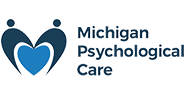Managing Seasonal Affective Disorder (SAD) During the Fall Season
Seasonal Affective Disorder (SAD) is a form of depression that has symptoms related to the changing seasons. Most people who struggle with SAD struggle most with their symptoms during the fall and winter months. In the United States alone, 5 percent of the population struggles with Seasonal Affective Disorder.
What is Seasonal Affective Disorder (SAD)?
Seasonal Affective Disorder (SAD) is a form of depression that has symptoms triggered by the seasons or time of year.
Causes of SAD
Chemical Imbalances: During the fall and winter months, there is typically a lack of sunlight or light in general. Not having exposure to light can cause our brains to have difficulties functioning, which can lead to depression. Lack of sunlight can cause imbalances in melatonin and serotonin in the body. These chemicals can cause changes in mood and mental health in general.
Evidence-Based Treatment Options
Research from the American Psychiatric Association found that at least 40% of Americans deal with low mood and symptoms of seasonal depression.
Light Therapy: Light Therapy is a type of therapy that treats seasonal depression because it helps people get the benefits of sunlight, even if it’s artificial sunlight. People struggling with SAD can purchase light boxes, which a bright lights that help mimic sunlight. Getting enough daily sunlight leads to appropriate levels of vitamin D. Vitamin D deficiency can lead to low mood and ultimately depression.
Medication: Psychiatric medications can help target the symptoms of SAD that are associated with chemical imbalances and low mood. There is nothing wrong with taking medications to help with our mental health. Medications can help minimize symptoms of Seasonal Affective Disorder so that the person struggling can work through other issues in talk therapy.
Talk Therapy: Working with a therapist helps to alleviate some of the symptoms of SAD. If possible, working with a therapist who specializes in Cognitive Behavioral Therapy (CBT) can be especially helpful. CBT can be used to help people notice how their thoughts and behaviors are related to each other. Cognitive Behavioral Therapy has been shown to help alleviate symptoms of depression.
When to Seek Professional Help
If you or someone you love is struggling with a low mood or other symptoms of Seasonal Affective Disorder (SAD), you deserve to seek help and live a fulfilling life again. Some symptoms to look out for are low mood, irritable feelings, hopeless mindsets, and disengagement in activities the person previously enjoyed doing. Some other symptoms of this disorder are sleeping too much or too little. Regardless of the severity of your symptoms, you deserve help and relief from your disorder. We understand it can be difficult to start treatment. All it takes is one moment of bravery to take the first step towards living a more fulfilling life with improved mental health along with it.
If you are interested in working with us on working through your seasonal depression symptoms, we are here for you. Please reach out to us whenever you are able.
References
https://pmc.ncbi.nlm.nih.gov/articles/PMC4673349/
https://www.health.harvard.edu/newsletter_article/shining-a-light-on-winter-depression
https://mhanational.org/conditions/seasonal-affective-disorder-sad/
https://www.health.harvard.edu/newsletter_article/shining-a-light-on-winter-depression
https://www.nimh.nih.gov/health/publications/seasonal-affective-disorder
https://www.psychiatry.org/news-room
https://pmc.ncbi.nlm.nih.gov/articles/PMC5036984/
https://www.bu.edu/articles/2019/seasonal-affective-disorder/
Keywords: Seasonal Affective Disorder, depression, mental health, seasonal depression


-during-the-fall-season.jpg)